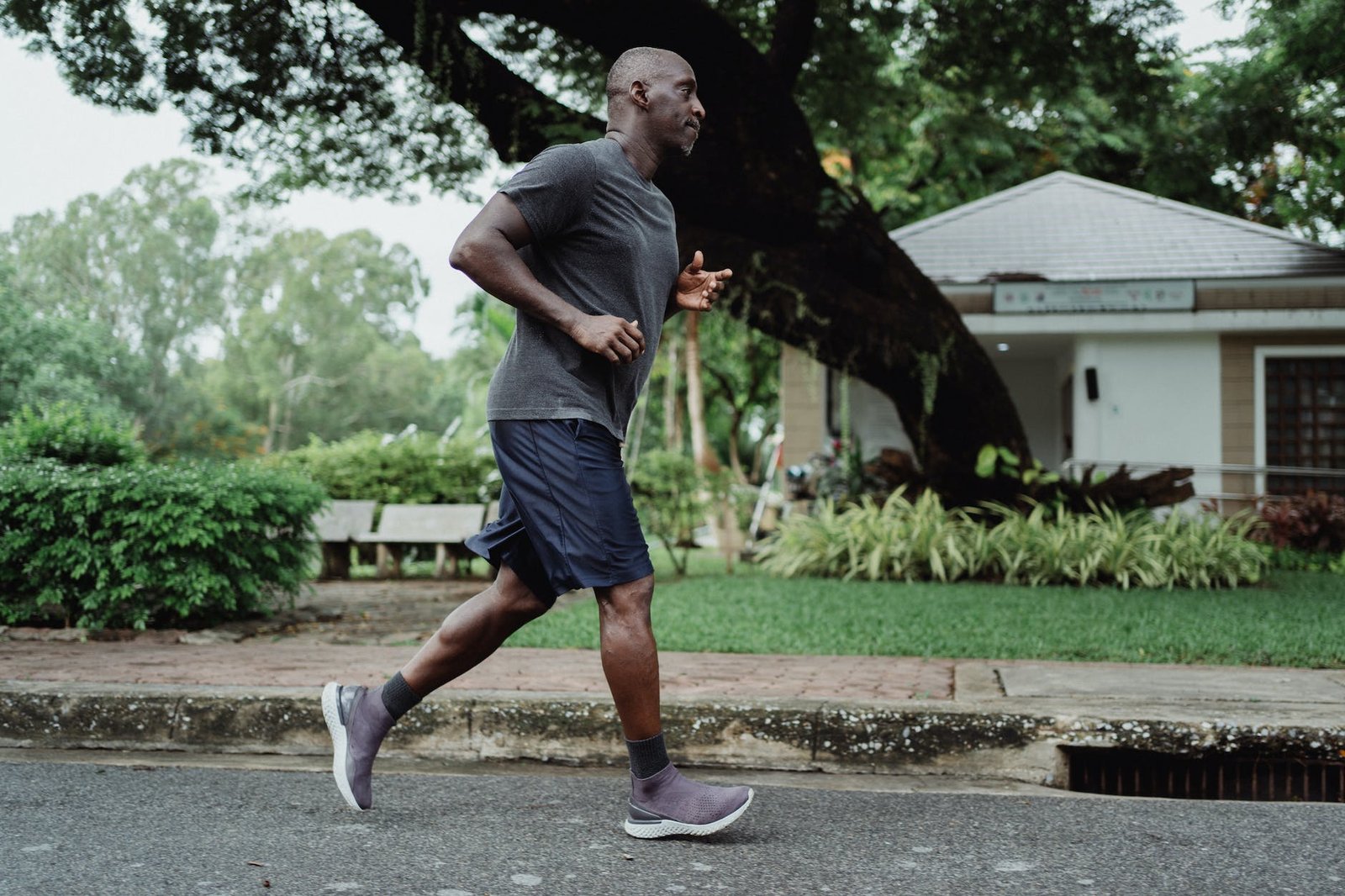Running To Lose Weight: Weight Loss Programs And Advice
Running is one of the simplest and most accessible sports available to us. All we have to do is put on our sneakers and go for a run. It is also an excellent sport for successfully losing weight, because running allows you to burn calories and lose fat.
However, not all running programs are effective for weight loss. Indeed, when you decide to run to lose weight, you have to think long term, that is to say, plan for weeks and months. It is by gradually increasing the duration of your training each week, and by adopting a good diet, that you will be most successful in losing your extra pounds, and above all in not gaining them back afterwards.
In this article, find all the essential tips for successfully losing weight by running, as well as running training programs to lose weight.
Does running make you lose weight?
Running is one of the most recommended sports for losing weight, because running allows you to expend a lot of energy. Indeed, running burns a lot of calories, coming both from our fat reserves and from our glycogen reserves (stock of carbohydrates in the body). Thus, running burns more calories than weight training, indoor cardio, walking, or cycling.
When you run, you burn approximately 1 kcal per kg per kilometer run, regardless of running speed. So, to calculate how many calories you can burn running, you can use the following formulas:
Your weight (in kg) = number of calories burned per kilometer travelled.
Your weight (in kg) * distance (in km) = calorie consumption for the entire running session.
Thus, an 80 kg runner who covers 4 km in 30 minutes will expend approximately 320 calories during his training.


Running is therefore effective for losing weight, in particular for the following reasons:
- Burn calories more easily.
- Tap into fat stores.
- Refine by losing abdominal fat and thighs.
- Maintain or even increase muscle mass.
- Avoids the Yo-yo effect, and the resumption of long-term lost pounds.
To lose weight, you must burn more calories than you consume, in order to achieve what we call a negative energy balance. In this situation, your body has no choice but to tap into your fat stores to provide enough energy on a daily basis. This can be obtained by increasing your energy expenditure, in particular through sport, and/or by reducing your energy intake through food.
In summary, running to lose weight is an effective method, but you also have to eat healthy and control your calorie intake so you don’t eat more than you need. It is therefore necessary to combine the practice of running with the dietary changes recommended for weight loss.
Walk or run to lose weight?
For the same distance travelled, running burns more calories than walking. Running 1 km burns an average of 100 kcal, compared to 68 kcal when walking.
However, running being a more traumatic sport than walking, it is often difficult to lose weight only through running, especially when you are just starting out. Indeed, a beginner runner will not be able to run long enough at these beginnings to burn enough calories, and thus lose weight. In addition, he quickly risks injuring himself, and no longer being able to run.
For this reason, brisk walking is a sport often recommended and associated with running to successfully lose weight effectively. Indeed, walking also allows you to expend energy, and has the advantage of not being traumatic for the joints. The risk of injury is lower than for running, which allows you to cover more kilometers, and to train more each week.
As a result, most running programs to lose weight include brisk walking sessions, in order to increase energy expenditure, and to start running more easily.
In the long run, running and walking are two very effective activities for weight loss and fat loss.
How to run to lose weight?
Here’s how to run to lose weight when you’re a beginner:
- Run 3 times a week maximum.
- Do not run 2 days in a row.
- Alternate running with brisk walking.
- Run in endurance (you must be able to speak and not be out of breath).
- Perform a good joint and muscle warm-up before running.
In addition, you should add the following elements to your running program:
Add sessions of 45 min of brisk walking, or cycling,


non-running days.
Do 2 sessions per week of muscle strengthening, to promote the loss of fat mass.
Adopt a healthy, balanced, and “anti-inflammatory” diet.
Combine running with less traumatic cardio sports, such as cycling, brisk walking, or swimming.
The running program must also be associated with the practice of muscle strengthening. Indeed, we know that muscle building is effective for losing weight, mainly for losing fat mass, and maintaining or even increasing muscle mass. Therefore, you can add 2 muscle building sessions per week, in addition to running sessions.
No matter what sport you choose, it’s important to familiarize yourself with your new training program. Gradually increase the difficulty level of your workouts to reduce the risk of injury and achieve better results.
How long or how many km to run to lose weight?
To lose weight effectively, you have to run between 150 and 250 minutes per week, or about 20 to 30 km per week minimum.
Overall, to successfully lose weight through sport, we know that:
- Less than 150 minutes of training per week will have a minimal effect on weight loss.
- More than 150 minutes per week will generally result in moderate weight loss.
- Between 225 and 420 minutes of training per week seems the ideal time to lose weight effectively.
- If you are a beginner runner, you will not be able to run as much every week, because the risk of injury and overtraining is too high. Rest assured, you don’t need to run so much to lose weight, as long as you combine running with other sports.
In addition, if you run more than 5km per week, which you associate with a dietary change promoting weight loss, you may also lose weight and lose fat, the weight loss will only be slower.
So whether you run 10, 20, or 30 minutes each run, what matters most for weight loss is the total time spent exercising each week, over several weeks and months.
How fast to run to lose weight?
To lose weight, you have to run at a so-called endurance speed. At this pace, you should be able to run at a speed that allows you to comfortably carry on a conversation without stopping at every word to breathe. For some, the average speed on the flat will be 6 km/h, for others 8 km/h, and for the fittest 10 km/h or more. If you know your maximum heart rate (FCM), your basic endurance pace should be about 70% of it.
Indeed, to lose weight by running, the objective is to accumulate the most kilometers each week, without injuring yourself. So the more kilometers you cover, the more calories you burn, regardless of your speed. If you run too fast, you risk getting exhausted very quickly, and injuring yourself.
By running in fundamental endurance, you burn more fat to provide energy, you tire less, you recover better, and you reduce the risk of injury. As a result, it allows you to gradually increase your training volume week after week, which is the most important thing for successful weight loss.
Then, when you are able to run 5km without stopping, you can add faster training, thanks to intervals (HIIT in English), which burn more calories than endurance training, for the same duration of training. The best known split training is 30/30, that is to say a cycle of 30 seconds fast, 30 seconds slow, repeated 5 to 10 times.
However, interval training tends to increase the risk of injury, and can lead to chronic fatigue and even overtraining. In addition, this type of training is mentally difficult, and can lead to a drop in motivation.
To run and lose weight, it is therefore advisable to run at slow speed, in fundamental endurance, especially if you are a beginner runner. Later, if you wish, you can incorporate 1 faster interval session per week, while continuing your endurance training.







